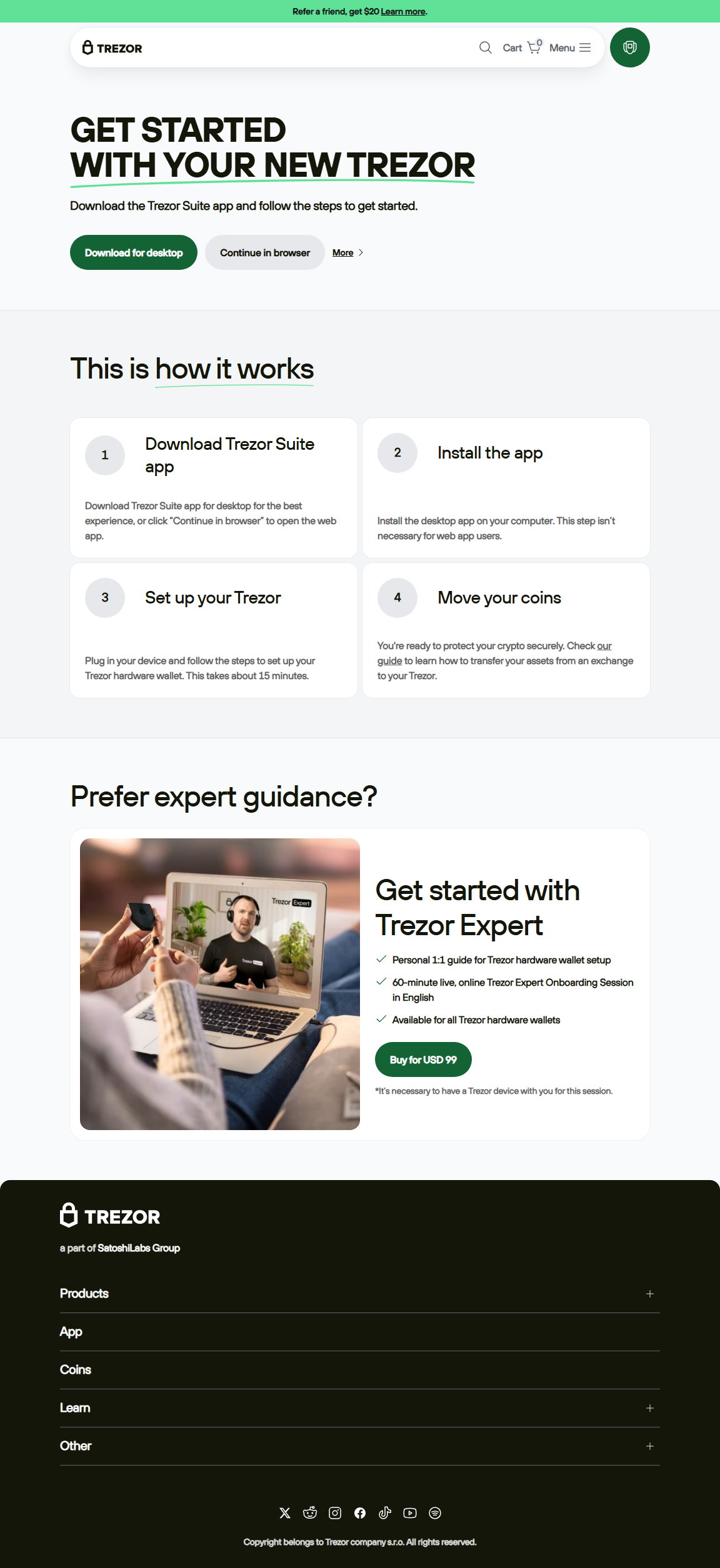Unlocking Security: The Ultimate Guide to Trezor Login
Learn how to securely access your Trezor hardware wallet, navigate its login process, and safeguard your cryptocurrency like a pro.
What Is Trezor Login? A Simple Explanation for Beginners
If you’re new to crypto, understanding Trezor Login starts with knowing what a hardware wallet is. Trezor is a device that stores your private keys offline, which means your crypto is safe from hackers and malware.
Logging in to your Trezor wallet isn’t about typing a username and password online. Instead, it’s about physically connecting your device, verifying your identity through your PIN and optional passphrase, and letting the device securely sign transactions or grant access.
Why Does Trezor Use This Unique Login Process?
Unlike web wallets or exchange logins, Trezor prioritizes security over convenience. By requiring physical presence and device verification, it eliminates the risk of phishing attacks, keyloggers, and online breaches. The Trezor login process is designed to keep your private keys strictly offline, giving you complete control.
How to Log Into Your Trezor Wallet: Step-by-Step Guide
- Connect your Trezor device via USB cable to your computer or supported smartphone.
- Launch the official Trezor Suite app or visit
wallet.trezor.ioin your browser. - Verify your device's firmware is up to date for maximum security. The Suite will usually prompt you if an update is needed.
- Enter your PIN on the physical device. The scrambled keypad protects against spying.
- Optionally, input your passphrase on the device or in the Suite. This feature creates an extra hidden wallet for advanced users.
- Wait for authentication to complete — the Trezor device signs the login securely without exposing keys.
- Access your dashboard, view balances, send or receive cryptocurrencies safely and confidently.
Important Security Reminders for Trezor Login
- Never share your recovery seed or passphrase online or with anyone. These are your ultimate keys — anyone with access can steal your funds.
- Only use official Trezor software and websites. Phishing scams often mimic the login process to trick users.
- Regularly update your device firmware. Security patches help defend against new threats.
- Set a strong, unique PIN. It prevents unauthorized access even if someone gets hold of your device.
Troubleshooting Common Trezor Login Issues
Pro Tips for Smooth Trezor Login Experience
- Use a trusted device free from malware to connect your Trezor.
- Keep your USB cable and ports clean to avoid connection issues.
- Backup your recovery seed in multiple secure, offline locations.
- Enable firmware auto-updates within Trezor Suite for hassle-free security.
Frequently Asked Questions (FAQs)
- Can I log into my Trezor wallet without the physical device?
- No, the physical device is essential for authentication. It ensures your private keys never leave the hardware, keeping your funds secure.
- What happens if I forget my PIN?
- After multiple failed attempts, the device wipes itself. You’ll need your recovery seed to restore your wallet on a new device.
- Is the passphrase required during login?
- The passphrase is optional but highly recommended for added privacy. It creates hidden wallets inaccessible without the passphrase.
- Can someone hack my Trezor during login?
- It’s extremely unlikely. The login requires physical device access, PIN entry on the device, and private keys never leave offline storage.
